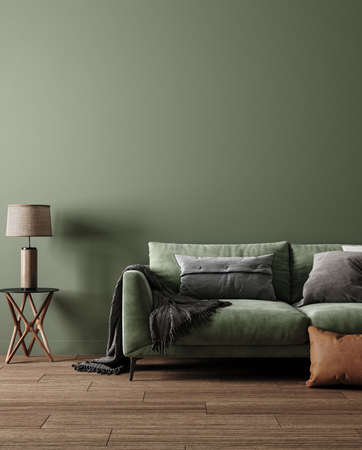1. Historical Essence of Georgian Interiors
The Georgian interior style, a hallmark of refined British taste, draws its essence from the 18th-century period spanning the reigns of George I through George IV (1714–1830). During this era, Britain witnessed profound social and architectural transformation, as the Enlightenment ideals of order, balance, and rationality permeated every aspect of life. This distinctive aesthetic is rooted in classical architecture, inspired by the works of Andrea Palladio and the symmetry found in Ancient Roman and Greek structures. The result was a unique blend of proportion, grandeur, and understated elegance that came to define not only stately homes but also urban townhouses across the UK.
Influences Shaping Georgian Style
| Influence | Description |
|---|---|
| Palladianism | Emphasis on symmetry and classical proportions, inspired by Italian architect Andrea Palladio. |
| Enlightenment Thought | Focus on rational design, orderliness, and harmonious layouts reflecting intellectual advancements. |
| British Society | A rising middle class sought elegance and sophistication in their homes, mirroring aristocratic tastes. |
| Urban Development | The boom in town planning led to iconic terraces and squares with uniform façades and interiors. |
The Enduring Appeal of Georgian Design
What makes Georgian interiors truly timeless is their adaptability—classic features such as high ceilings, sash windows, and decorative cornicing continue to inspire modern home renovations throughout the UK. The enduring legacy of this period is seen in both preserved heritage properties and contemporary reinterpretations that pay homage to its graceful symmetry and restrained colour palettes. Understanding these historical roots provides a rich foundation for embracing Georgian style within today’s living spaces.
2. Iconic Proportions and Symmetry
At the heart of Georgian interior style in the UK lies a devotion to proportion and symmetry, echoing the rational elegance of classical architecture. These hallmark features create an enduring sense of order and calm that translates beautifully into modern homes. Georgian design is unmistakable for its balanced room layouts, where each architectural element is thoughtfully positioned to achieve visual harmony.
The Art of Balanced Layouts
Georgian interiors are often arranged around a central axis, resulting in rooms that feel serene and inviting. Whether it’s grand country houses or refined London terraces, you’ll find doorways perfectly aligned with windows, chimneypieces forming focal points, and alcoves set in pairs. This disciplined approach ensures that every space feels both spacious and intimate—a trick well worth adopting in today’s open-plan living.
Georgian Proportion Examples
| Architectural Feature | Typical Proportion | Visual Effect |
|---|---|---|
| Ceiling Height | High (often 3-4 metres) | Creates grandeur and airiness |
| Window Placement | Sash windows evenly spaced | Maximises natural light and symmetry |
| Fireplace Positioning | Centrally located on main wall | Establishes focal point and balance |
| Cornicing & Mouldings | Elaborate, yet proportionate to room size | Adds refinement without overpowering space |
The Role of Grand Cornicing & Harmonious Details
No discussion of Georgian interiors would be complete without mentioning the exquisite cornicing and mouldings that frame these spaces. These decorative features—often egg-and-dart or dentil patterns—are not just embellishments but serve to enhance the room’s proportions, drawing the eye upwards and emphasising ceiling heights. When paired with symmetrical joinery such as panelled doors and shutters, the effect is one of timeless British sophistication that feels both stately and welcoming—even in a contemporary setting.
![]()
3. Traditional and Modern Georgian Colour Palettes
The timeless appeal of the Georgian interior style is rooted in its elegant use of colour, where each shade was carefully chosen to reflect both natural light and architectural harmony. Historically, authentic Georgian paint colours included soft greys, muted blues, sage greens, and gentle creams—hues that were achieved using natural pigments available during the 18th and early 19th centuries. These understated tones were designed to enhance symmetry and balance within grand yet restrained spaces typical of Georgian homes across the UK.
In today’s modern British interiors, these period-inspired colours are experiencing a renaissance. Homeowners often opt for heritage paint ranges to achieve an authentic look, while adapting the palette to suit contemporary lifestyles. Subtle shifts in tone and finish can make these colours feel fresh, inviting, and perfectly at home in both traditional townhouses and modern flats.
Classic vs Contemporary: A Palette Comparison
Original Georgian Colours |
Modern Adaptations |
|---|---|
| Soft Dove Grey | Cool Grey with Slight Blue Undertones |
| Muted Prussian Blue | Deeper Navy or Teal Accents |
| Sage Green | Olive or Eucalyptus Green Feature Walls |
| Pale Stone or Cream | Warm Taupe or Off-White Neutrals |
| Dusky Rose or Blush Pink (in finer rooms) | Bolder Terracotta or Dusty Coral Highlights |
Adapting Georgian Colours for Contemporary Living Spaces
To bring Georgian sophistication into a modern British home, consider layering these classic hues with textural finishes such as matte walls, natural wood floors, and crisp white ceilings. For open-plan spaces, use period-inspired neutrals as a base palette, introducing colour-blocked sections of blue or green to define distinct zones. Soft furnishings in velvet or linen add depth while retaining the serene atmosphere that characterises Georgian design. Whether you’re renovating a listed property in Bath or giving a London flat a sense of historic charm, this approach ensures your interiors remain both rooted in tradition and relevant for today’s living.
4. Architectural Features and Detailing
One of the defining characteristics of Georgian interior style in the UK is its exquisite architectural detailing, which gracefully blends formality with refined craftsmanship. British Georgian homes are celebrated for their harmonious proportions and a dedication to elegant features that have stood the test of time, making them especially appealing to those seeking to infuse modern homes with timeless character.
Signature Elements of Georgian Interiors
| Feature | Description |
|---|---|
| Sash Windows | The iconic sash window, often with six-over-six panes, is an essential hallmark. These vertically sliding frames not only provide beautiful symmetry but also maximise natural light, complementing the graceful façade of British townhouses. |
| Ceiling Roses | Delicate plaster ceiling roses centre around chandeliers or pendant lights. Their ornamental motifs—ranging from simple petals to intricate acanthus leaves—draw the eye upward and add a layer of grandeur to even the most understated spaces. |
| Ornate Skirting | Tall skirting boards, frequently featuring stepped or ogee profiles, ground the room while providing visual continuity. Painted in crisp whites or off-whites, they frame the perimeter with a sense of order and proportion characteristic of Georgian design. |
| Classical Fireplaces | A focal point in any Georgian room, fireplaces often boast marble surrounds, decorative corbels, and gently arched openings. These pieces not only offer warmth but serve as an anchor for symmetrical furniture arrangements and elegant mantel displays. |
Sash Windows: Light and Proportion
Sash windows remain one of the most cherished features in British heritage properties. Their slender glazing bars and vertical emphasis accentuate Georgian ideals of balance while lending rooms an airy openness. Restored originals or well-crafted replicas maintain authenticity and add value to both period renovations and contemporary reimaginings.
Ceiling Roses & Ornate Plasterwork
The artistry found in ceiling roses extends to cornices and coving, where delicate plasterwork softens transitions between walls and ceilings. Such details evoke a sense of craftsmanship rarely matched by modern alternatives, enhancing both formal reception rooms and more intimate living spaces.
Maintaining Authentic Detailing in Modern Homes
For homeowners wishing to evoke true Georgian style, preserving or reinstating these signature features is key. Where originals are absent, skilled artisans can recreate period-appropriate details using traditional materials and methods—ensuring every element pays homage to Britain’s rich architectural legacy while seamlessly integrating with contemporary comforts.
5. Adapting Georgian Style for Today’s Homes
The timeless grace of Georgian interiors lends itself beautifully to modern British homes, provided the elements are thoughtfully adapted to suit contemporary lifestyles. Here are some expert tips and insights for harmoniously blending Georgian elegance with today’s comfort and practicality.
Embracing Classic Symmetry While Enhancing Functionality
Start by celebrating the classic Georgian emphasis on symmetry—arrange furniture in balanced groupings around a central focal point, such as a fireplace or statement window. However, consider multi-functional pieces that cater to modern needs: ottomans with storage, extendable dining tables, or modular sofas that maintain order without sacrificing versatility.
Georgian Colour Palettes Reimagined
Traditional Georgian interiors favoured muted hues like sage, duck egg blue, and stone. For a fresh twist, layer these heritage shades with contemporary accents—think plush velvet cushions in mustard or deep teal, or metallic touches for subtle glamour. The table below illustrates how classic and modern colour pairings can work together:
| Classic Georgian Shade | Modern Accent | Suggested Use |
|---|---|---|
| Dove Grey | Copper | Wall paint with copper light fittings |
| Sage Green | Ochre Yellow | Cabinetry with ochre textiles |
| Pale Blue | Charcoal | Soft furnishings and feature wall |
| Cream | Navy Blue | Ceiling cornices with navy accessories |
Merging Historic Details With Contemporary Comforts
If you’re lucky enough to have original Georgian features—cornicing, sash windows, or panelled doors—restore and highlight them. Pair these period details with underfloor heating, discreet smart lighting, or integrated sound systems to ensure your home is as comfortable as it is beautiful.
Sourcing British-Made Furnishings and Decor
To reflect the best of UK design sensibility, opt for local craftsmanship where possible. Seek out British brands known for quality upholstery or bespoke joinery that echoes Georgian lines but meets modern demands for durability and ease of maintenance.
A Seamless Blend: Tips at a Glance
- Balance ornate Georgian mirrors and mouldings with sleek, minimalist lighting.
- Choose engineered wood flooring that references original wide planks but stands up to daily use.
- Mix antiques with contemporary art for an eclectic yet cohesive look.
- Create reading nooks in alcoves—a classic Georgian touch updated with ergonomic chairs.
- Punctuate neutral backdrops with bold patterned rugs or curtains inspired by British heritage prints.
By thoughtfully integrating these ideas, you’ll achieve a home that pays homage to the enduring beauty of Georgian style while delivering all the practicality and warmth required by modern British living.
6. Curated Furnishings and Decorative Accessories
Bringing the Georgian interior style into your modern British home means thoughtfully curating furniture and decorative elements that echo period elegance while embracing contemporary comfort. A well-chosen blend of antique-inspired pieces and streamlined modern designs can create a harmonious living space, evoking the charm of 18th-century Britain without sacrificing everyday practicality.
Key Furniture Ideas for Georgian-Inspired Spaces
| Furniture Piece | Georgian Influence | Modern Interpretation |
|---|---|---|
| Statement Armchairs | Scrolled arms, cabriole legs, and upholstered in rich damasks or velvets | Sleek silhouettes with classic detailing in muted, contemporary fabrics |
| Console Tables | Elegant mahogany, ornate carvings, and gilt accents | Slim profiles, clean lines, subtle brass or gold hardware |
| Dining Chairs | Chippendale or Queen Anne backs, carved woodwork | Minimalist frames with nods to traditional shapes, painted or stained finishes |
| Sofas | High backs, rolled arms, deep seats for comfort and formality | Low-profile designs with button-tufting or piping as a gentle reference to history |
Period-Inspired Lighting: Setting the Ambience
Lighting plays a pivotal role in Georgian interiors. Ornate chandeliers and wall sconces historically defined grand drawing rooms and dining spaces. Today, opt for fixtures that reinterpret these classics—think crystal or glass pendants with pared-back metalwork, or lantern-style lamps that softly illuminate alcoves and corners. Mixing period details with energy-efficient bulbs ensures both authenticity and sustainability.
Essential Decorative Accessories for a British Touch
- Cherished Ceramics: Display blue-and-white porcelain vases on mantlepieces or windowsills—a quintessential Georgian motif.
- Mirrors with Gilt Frames: Use oversized mirrors to reflect light and enhance symmetry; gilt or wooden frames nod to historic grandeur.
- Drapery and Textiles: Layer soft furnishings in botanical prints or subtle stripes on curtains, cushions, and throws to introduce warmth.
- Bespoke Rugs: Anchor seating areas with hand-knotted rugs featuring geometric or floral patterns reminiscent of period design.
- Sculptural Objects: Curate marble busts or decorative urns as focal points on console tables or shelving.
The Art of Curation: Old Meets New
A successful Georgian-inspired interior is never static; it’s an evolving narrative that respects tradition while inviting modernity. Select pieces that feel personal—whether a vintage find from a local antiques market in Bath or a custom sofa upholstered in British wool. Layering time-honoured materials like oak, walnut, and brass with contemporary art or minimalist ceramics keeps the space fresh yet rooted in history. Ultimately, your curated furnishings should celebrate the best of British heritage while reflecting the rhythms of modern life.


